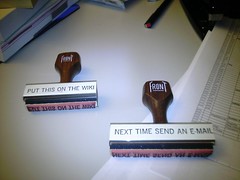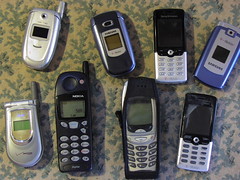
President-elect Barack Obama’s announcement this week of Arne Duncan as his pick for Secretary of Education has me reflecting on my own visits to Chicago Public Schools, where Duncan has been CEO for the past seven years. Chicago is a mandatory stop for anyone interested in education reform. In 1995, when the Illinois legislature gave Mayor Richard Daley control of the nation’s third-largest district, CPS became ground zero in the battle to fix the nation’s public schools.
Chicago already had a long history of failed school reform efforts by the time the mayor took charge. A previous Secretary of Education, Bill Bennett, breezed through the Windy City in 1988 and declared the city’s school system “worst in the nation.” Bennett even singled out one school—Goudy Elementary—as the worst of the worst. (Note to Duncan: That’s the kind of negative publicity stunt that doesn’t help schools or kids.)
When I was researching urban school reform in 1999, I made a bee-line for Goudy Elementary. I wanted to find out if anything had changed from a few years earlier, when a somber Chicago Tribune series began, “Welcome to Goudy, where the future dies early.” I was greeted by Patrick Durkin, the no-nonsense principal brought in to fix the mess. Education wasn’t Durkin’s first love. This fast-talking father of eight was a former fire captain who shifted careers after being badly burned. But from the purposeful way he walked through that building, greeting teachers, students, and parents by name, it was clear he’d found his passion.
Durkin found a way to make school work in the high-poverty Uptown neighborhood, where immigrants were accustomed to being served poorly by public institutions. He introduced a schoolwide focus on reading (including the use of the Reading Recovery program to boost literacy), and was ingenious at finding space for personalized instruction in an overcrowded building. I remember him showing off one cubbyhole used for one-on-one tutoring; it used to be a walk-in safe. And he had zero tolerance for what he called “foolishness.” His first day on the job, he was waiting outside to greet his new students when rival gang members from a nearby housing project got into a fight. Durkin jumped in to break it up himself.
Clearly, leadership was something Durkin understood. But he also knew this: “When a place is failing, you can do anything you want.” That’s what he told me when I asked him about the support he had received from headquarters to turn around this one-failing school. Goudy didn’t get any attention, he said, until its students began to thrive. (Eventually, the story of Goudy’s turnaround became the opening chapter in Making Schools Work.)
A few years later, I made a return trip to Chicago to interview some exemplary teachers about how they were integrating technology into instruction. I was staying at a downtown hotel and needed to grab a cab to get to my interviews. I remember asking the doorman, a young African American man, for help with directions. He took a look at the address, took another look at me, and said, “What are you doin’ going to that neighborhood?” I explained that there was a school there I wanted to visit. “I know,” he said. “I went to that high school.”
At the doorman’s alma mater, I met a smart social studies teacher who had ideas galore about how technology could help her students. Only problem was, her kids had virtually no access to computers. The district was rolling out ambitious plans for professional development around technology use. But decisions about hardware were being made by local committees. So access varied widely from one neighborhood to the next. At her school, she had a principal who didn’t much like computers and few colleagues who shared her vision of 21st-century learning. And her students? They shared the doorman’s sense of the place: Why in the world would anyone choose to go there?
As our incoming Secretary of Education prepares for his challenging new role, I’m thinking again about those Chicago schools. I heard through the grapevine that Principal Durkin passed away a few years ago, but Goudy Elementary continues to serve its diverse children well. It’s now a technology magnet school. Not sure what’s become of the doorman’s alma mater. I’m willing to bet, however, that CPS remains a mixed bag, with some pockets of excellence and some places where no kid should have to spend time. That’s not unlike what Duncan will find if he looks closely at the state of public education across the country today. His challenge—the nation’s challenge—is figuring out how to make excellence the new norm.




























